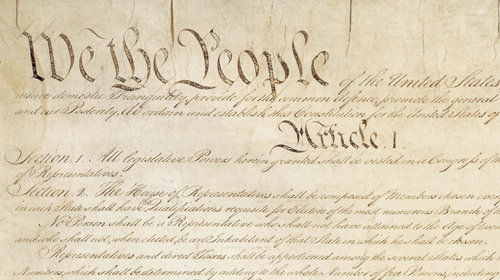
Some have been dismissive of the reforms in the new Justice Department guidelines governing investigations of members of the news media. But I’m not so pessimistic, at least with respect to the most significant change, which could have possibly prevented what happened in the recent AP case that drew headlines.
First, some background. The Justice Department introduced formal regulations governing the use of subpoenas to collect reporters’ phone records back in 1980.
Under the 1980 regulations, there was actually a presumption against notifying the media outlet that its records had been sought prior to issuance of the subpoena. The regulations said that notice and negotiations with the affected media organizations should precede issuance of the subpoena only in cases where the assistant attorney general determines that “such negotiations would not pose a substantial threat to the integrity of the investigation.”
The revised guidelines require notice unless the attorney general himself determines, after consultation with a new oversight committee at DOJ, that notice would pose a “clear and substantial threat to the integrity of the investigation,” a “grave” threat of harm to national security, or would “present an imminent risk of death or serious bodily harm.” This is a critically important burden shift that makes a lot of common sense: the DOJ will now notify a news organization that it has obtained its phone records unless the attorney general himself (not the assistant attorney general) makes an independent determination that there is a very compelling reason not to.
Crucially, the revised guidelines also make clear that simply the prospect of a legal challenge prolonging an investigation will not justify delaying notice to the media organization whose records were sought. By limiting the instances in which the DOJ can delay notice, the change would force lawyers preparing media subpoenas to ensure they can be defended in court. It could even dissuade them from issuing subpoenas at all for fear of setting a precedent that could impair future investigations. Both would be very positive developments.
Additionally, the revised guidelines would ensure that just a stall in getting the records will not, itself, justify the DOJ delaying notice to the affected media outlet. This has direct resonance with the AP case. In that case, it’s possible that the “substantial threat to the investigation” was that the DOJ would have had to wait months or years to get the records if it notified the AP of its subpoena. In a separate case with similar facts, where the DOJ did notify The New York Times of its intent to issue a subpoena and then faced a court challenge, the DOJ eventually got the records, but only after several years of legal wrangling. Under these revised guidelines, they won’t be able to avoid notifying a media outlet just for fear of litigation.
I’m less enthusiastic (though still somewhat optimistic) about the second big reform in the 2013 changes, which is supposed to prevent the government from using search warrants against innocent members of the media to get evidence on the reporter’s sources. I’m going to address that in a second post, which will also look at the two main failings of the 2013 changes. Stay tuned.
Learn more about freedom of press and other civil liberties issues: Sign up for breaking news alerts, follow us on Twitter, and like us on Facebook.

